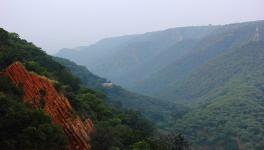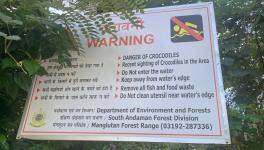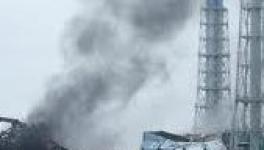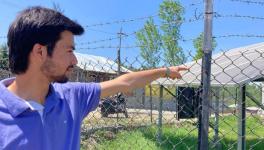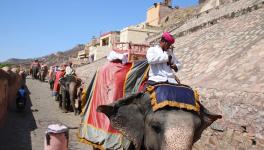The Atom vs the Sun: DD Kosambi on Nuclear and Solar Power in India
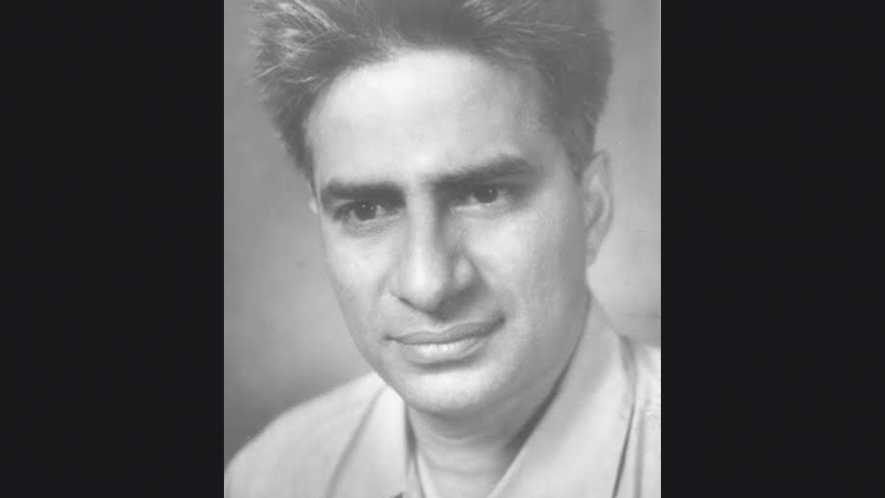
Damodar Dharmanand Kosambi. Image Courtesy: Twitter/@ComradeDRaja
Recently, Christopher Nolan’s new feature film Oppenheimer — based on the life of the American physicist J. Robert Oppenheimer and his work as the director of the Manhattan Project in weaponising nuclear power — has reinvigorated an old debate. Did the atom bomb usher in a brave new world for humanity, or did it hasten our collective doom?
The ethical dilemma predicating this debate is fraught with all kinds of contradictions — the need for deterrence vs mutually assured destruction, the principle of nuclear parity vs the retrenchment of geopolitical hierarchies based on nuclear capabilities, the long-term deployment of nuclear power for civilian and peaceful purposes vs the militarisation of nuclear sciences to enhance national security.
Scientists and public intellectuals, journalists and activists, politicians and soldiers have weighed in on various aspects of this debate without any conclusive resolution. Just as Oppenheimer is said to have told President Truman that he had blood on his hands following the dropping of the atom bombs on Hiroshima and Nagasaki, criticisms of the military use of nuclear power and, at times, of the very nature of nuclear power itself, often emanated from within the discipline and the establishment. Such was also the case in post-Second World War India.
Damodar Dharmananda Kosambi (July 31, 1907 – June 29, 1966), the legendary Indian polymath, was a staunch critic of nuclear power and an ardent advocate of solar energy, even though for the better part of his later life, he had been on the payroll of the Tata Institute for Fundamental Research (TIFR) in Bombay. The TIFR, along with the Atomic Energy Establishment, Trombay (later the Bhabha Atomic Research Centre), were institutes of talismanic importance for the Indian nuclear energy and weapons programme.
Kosambi held the chair in Mathematics at the TIFR for 16 years — from 1946 until 1962. Initially on good terms with the institute’s founding director Homi J. Bhabha, Kosambi fell out with him and the Department of Atomic Energy over time. This was partly due to his newfound intellectual interests in a radically different interpretation of ancient Indian history, numismatics, and Sanskrit poetics, partly due to his discreditable attempts to solve the Riemann hypothesis in mathematics, and partly due to his increasing political awakening as a socialist campaigner for world peace and anti-imperialism.
Having been sceptical of nuclear power before, Kosambi became overtly critical of its potential abuses after careful consideration throughout the late 1950s. He wrote and spoke quite a bit on this. Yet, he is hardly remembered for anticipating contemporary objections against harnessing nuclear energy and its possible pitfalls decades back, without the benefit of hindsight.
In a letter addressed to Rameshwari Nehru (dated July 23, 1957) — chairperson of the Indian Preparatory Committee for the International Conference against A and H-Bombs and for Disarmament, Kosambi wrote:
"Speaking not only for myself, but on behalf of all competent and honest scientists of my acquaintance, let me assure you that the work of your Convention is regarded by all of us as being of the utmost importance. Not only our country but the whole world needs to be freed, once and for all, from the danger of atomic warfare. This will be a first step which should ultimately relieve us from the fear of mass-destruction, and which must lead ultimately to the abolition of all warfare. But it is today the essential step. The All-India Convention must prove that the ban on nuclear weapons and on mass killing of any sort can be achieved peacefully, by pressure of public opinion, and without damage to the integrity or political sovereignty of any nation."
This was no idealist’s desperate cry. It was a rationalist’s reasoned response. Kosambi argued that instead of acting as the ultimate deterrent against the outbreak of hostilities between nuclear-capable belligerents, the atomic threat might catalyse aggression in the event of or on the brink of a thermonuclear war. He emphasised that there was no ‘clean bomb’ and that there could never be one. Nuclear fallouts could only be roughly estimated and not really prepared for. Consequently, the Cold War thermonuclear arms race did nothing but jeopardise the future of the entire humanity without exception.
However, Kosambi was not just a doomsayer. In his 1957 essay titled ‘Sun or Atom?’, he advocated against a nostalgic return to nuclear innocence:
"Indiscriminate atomic bomb explosions, whether for testing or actual warfare, will leave a deadly ineradicable mark on the heredity of all living matter, including man himself. Already, before we have had any decisive benefit from atomic power, the problem of the radioactive waste material, which appears in the processing, has become formidable. This leads some prophets of gloom to the other extreme: humanity destroys itself by striving for progress; science is an evil. Let us go back to nature, the simple life of the villager. This reaction is puerile. The clock cannot be turned back. Science is not to blame, only the greed that misuses it."
He identified that the problem was not so much in the technology itself as it was in the intent of those who were supposed to wield it. For Kosambi, scientists working on nuclear energy and weapons projects around the world were merely cogs in national wheels and any advancement in science stemming from such ecosystems could only be accidental. Instead of mimicking the solar fusion and fission reactions in nuclear power plants, he advocated the optimal harnessing of the remarkable amounts of direct solar radiation that tropical countries like India received anyway. This, per Kosambi, would have been both more cost-effective and less wasteful.
Of course, he was not blind to the problems of solar power. Kosambi admitted that it could be unreliably inconsistent and difficult to store. However, he did note that its pros outweighed its cons quite significantly. For one thing, the dissemination of solar energy did not necessarily require a national grid and could truly decentralise and democratise access to electricity. Moreover, as he highlighted in two of his essays, ‘Atomic Energy for India’ (1960) and ‘Solar Energy for Underdeveloped Areas’ (1964), unlike nuclear power, solar power did not give rise to toxic byproducts.
Kosambi’s advocacy of solar energy was strategic, not utopic. He recommended its use as a source of energy for dispersed small industries and local use in India. It was to be preferred over nuclear energy but not to the extent of extinguishing the latter’s possible peaceful uses. It was meant to complement and not replace the very supply of conventional thermal energy in the country.
Per Kosambi, all useful science was applied science, and he recognised the ubiquitous military application of nuclear energy as an abuse — of both knowledge and power. In the final count, it does not seem that he believed solar power to be intrinsically better than nuclear power. Rather, it was the humane promise of solar power in all its limitations and not the dazzling but dangerous certitude of nuclear power that was able to truly captivate Kosambi. The one conviction he held fast to until his untimely death in 1966 was that while science may offer several choices, it is always up to society to choose what it thinks can inaugurate a better, safer future.
The writer is a Rhodes Scholar from India, studying Global and Imperial History at the University of Oxford. The views are personal.
Get the latest reports & analysis with people's perspective on Protests, movements & deep analytical videos, discussions of the current affairs in your Telegram app. Subscribe to NewsClick's Telegram channel & get Real-Time updates on stories, as they get published on our website.









